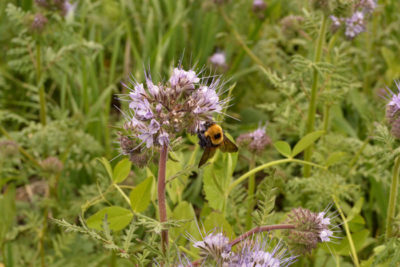By Doug Moss and Roddy Scheer, EarthTalk
Regenerative Agriculture (RA) describes farming and grazing practices that help reverse climate change by rebuilding the organic matter in soil and restoring degraded soil biodiversity.
“Specifically, Regenerative Agriculture is a holistic land management practice that leverages the power of photosynthesis in plants to close the carbon cycle, and build soil health, crop resilience and nutrient density,” reports California State University’s Regenerative Agriculture Initiative (RAI).
“Regenerative agriculture improves soil health, primarily through the practices that increase soil organic matter. This not only aids in increasing soil biota diversity and health, but increases biodiversity both above and below the soil surface, while increasing both water holding capacity and sequestering carbon at greater depths.”
The net result is a drawdown of atmospheric carbon dioxide, and the improvement of soil structure to reverse human-caused soil loss.
Regenerative Agriculture (RA) describes farming and grazing practices — such as the use of cover crops as pictured above — that help reverse climate change by rebuilding the organic matter in soil and restoring degraded soil biodiversity.
According to Terra Genesis International, which helps businesses integrate sustainable farming practices into their everyday operations, key principles guiding the implementation of RA include: progressively improving whole agroecosystems (soil, water and biodiversity); creating context-specific designs and making holistic decisions expressing the essence of each farm; ensuring and developing fair and reciprocal relationships among all stakeholders; and continually growing and evolving individuals, farms and communities to express their innate potential.
How these lofty goals are achieved also involves the implementation of many of the practices that are now commonplace in organic agriculture, including:
- permaculture design (utilizing the patterns and features observed in natural ecosystems)
- agroforestry (incorporating the cultivation and conservation of trees)
- keyline sub-soiling (to loosen compacted soils)
- no- or low-till farming (leaving it alone to do its thing)
- pasture cropping (growing annual crops in dormant perennial pastures)
- multi-species cover cropping and crop rotations (to introduce genetic diversity)
- the use of animal manure (to build up the resilience of the soil biota)
- encouragement of bees and other beneficial insects (for fertilization)
- the use of organic soil amendments such as biochar or terra preta (to enhance yield while sequestering carbon dioxide)
- ecological aquaculture (using water not land to grow food)
- perennial crops (they live on beyond one growing season)
- silvopasture (integrating trees with forage and livestock production)
“Over the centuries, agriculture has caused the loss and degradation of fertile soil, leading to the downfall of civilizations worldwide,” points out John Roulac, founder and CEO of the organic superfoods brand Nutiva, and an outspoken advocate for RA. “Modern industrial agriculture is doing it even faster.”
More and more farmers are starting to realize that their survival may well depend on whether they can pivot toward RA as the world warms.
“Regenerative agriculture is an approach to food and farming systems that works with nature’s rhythms and technology to feed our growing population, regenerate topsoil and enhance biodiversity now and long into the future,” concludes RAI, cautioning that it’s critical to change synthetic nutrient dependent monocultures, low-biodiversity and soil degrading practices. Indeed, our very existence may depend on it.
This post was previously published on earthtalk.org.






